products categories
- Battery Production Equipment Line
- Battery Lab Pilot Equipment Line
- Lithium Battery Pack Assembly Line
- Solid State Battery Assembly Line
- Sodium Ion Battery Production Line
- Supercapacitor Assembly Line
- Lithium Ion Battery Recycling Plant
- Dry Electrode Preparation Solution
- Perovskite Based Solar Cell Lab Line
- Li ion Battery Materials
- Cathode Active Materials
- Anode Active Materials
- Customized Battery Electrode
- Coin Cell Parts
- Lithium Chip
- Cylindrical Cell Parts
- Battery Current Collectors
- Battery Conductive Materials
- Electrolyte
- Metal Mesh
- Battery Binder
- Separator and Tape
- Aluminum Laminate Film
- Nickel Strip
- Battery Tabs
- Graphene Materials
- Nickel Felt
- Titanium Fiber Felt
- Battery
- Battery Pack Machine & Compoments
- Battery Pack Compoments
- Turnkey Solutions Battery Pack Assembly Line
- Cell Sorter
- Battery Pack Spot Welder
- Laser Welder
- Battery Charging Discharging Tester
- Battery Pack Aging Machine
- Battery Pack Comprehensive Tester
- CCD Visual Inspector
- Battery Pape Sticking Machine
- BMS Testing Machine
- Al Wire Bonding Machine
- Lithium Battery Machine
- Battery Tester & Analyzer
- Battery Safety Tester
- Battery Material Tester
- Rolling Press Machine
- Spot Welding Machine
- Vacuum Mixer Machine
- Crimping/Disassembling Machine
- Vacuum Sealing Machine
- Electrolyte Filling
- Stacking/Winding Machine
- Electrode Cutter/Slitter
- Pouch Forming Machine
- NMP Solvent Treatment System
- Lithium Battery Production Plant
- Vacuum Glove Box
- Furnaces
- Coaters
- Hydraulic Press
- Ball Mill
- Planetary Centrifugal Mixer
- Cutting Machine
- Laboratory Machine
- Metal Foam
contact us
- If you have questions, please contact us, all questions will be answered
- WhatsApp : +86 13174506016
- Email : David@tmaxcn.com
- Email : Davidtmaxcn@gmail.com
- Add : No. 39, Xinchang Road, Xinyang, Haicang Dist., Xiamen, Fujian, China (Mainland)
-
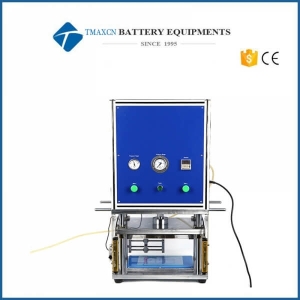 Semi-automatic Pouch Cell Battery Electrode Die Cutting Machine
Semi-automatic Pouch Cell Battery Electrode Die Cutting Machine
1 TMAX-MQ300 semi-automatic electrode die cutter is mainly used for pouch cell electrode sheet cut for stacking pouch cell battery. It is a necessary tool in the production line of pouch cell to produce specific shapes of cathodes and anodes with current collector tabs. 2 This Semi Automatic Die Cutter machine adopts Safety Curtain built in the front of the machine and double start button ensures operation safety when electrode sheets are fed from the front. 3 High speed, high accuracy, long lifetime to make cutted electrode without burr, to get a good consistency. 4 This model has max die dimension with 200*300mm, if need other models, please choose the TMAX-JD-500model with max die size up to 500*500mm.
-
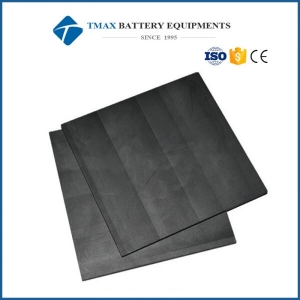 Graphite Electrode Sheet For Fuel Cell Electrode
Graphite Electrode Sheet For Fuel Cell Electrode
-
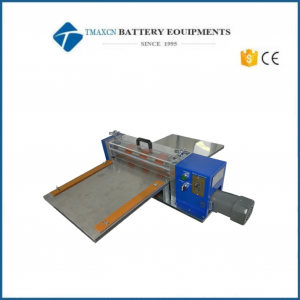 Lithium Battery Electrode Slitting Machine for Cylindrical and Pouch Battery Making
Lithium Battery Electrode Slitting Machine for Cylindrical and Pouch Battery Making
-
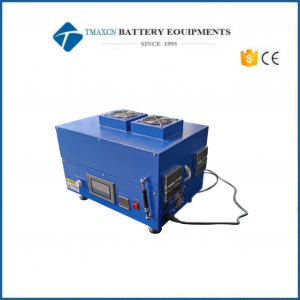 Touch Screen Compact Tape Casting Film Coating Machine with Dryer
Touch Screen Compact Tape Casting Film Coating Machine with Dryer
200ºC Max. Automatic Film Coater with Dryer Cover and 140mm Doctor Blade TMAX-JK-TMJ-200 is a CE Certified ready compact tape casting coater with a heating cover designed to produce films with consistent thickness. It has a unique driving system to produce a smooth coating on all types of materials. The flat vacuum chuck is built in to hold the substrate sheet in place, which is particularly useful when making thin coatings. One 140 mm width adjustable micrometer applicator (doctor-blade). Heating cover with digital temperature controller can dry films after coating up to 200°C with a temperature accuracy of +/-1°C. This equipment can be used for researchers on ceramic tape castings and Li-Ion battery electrode coating.
-
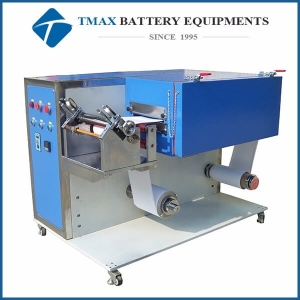 Lab automatic Battery Roll to Roll Electrode Coater Coating Machine
Lab automatic Battery Roll to Roll Electrode Coater Coating Machine
Automatic Roll to Roll Transfer Film Coating Machine with Drying Oven For Battery Electrodes TMAX-TCH-TB20A is a CE Certified and UL ready automatic battery electrode coating system. It uses transfer coating technique for better coating uniformity and is perfect for research or building prototypes (e.g. pilot scale studies) of new generation rechargeable batteries. It is integrated with the functions/ features of metallic foil roll unwinding (reeling out), slurry feeder, coating blade, baking oven, and final electrode winding (reeling in) together with touch screen operation for customer's utmost convenience.
-
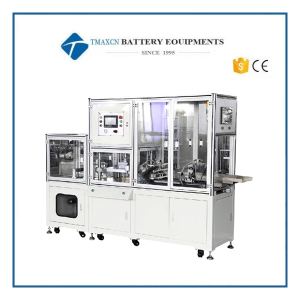 Automatic Pouch Cell Die Cutter for Battery Electrode
Automatic Pouch Cell Die Cutter for Battery Electrode
-
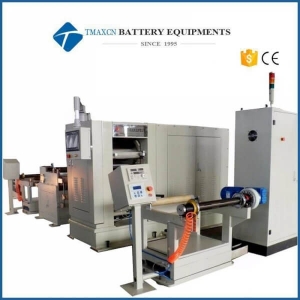 Hot Roller Press Calendering Machine for Li ion Battery Production Line
Hot Roller Press Calendering Machine for Li ion Battery Production Line
Heating Roller Press Calender Machine For Li ion Battery Production Line
-
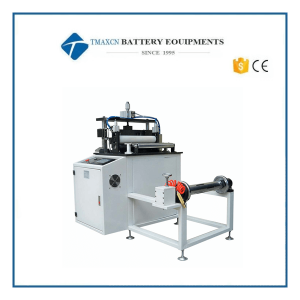 Lithium Battery Electrode Cutting Machine for 18650 26650 21700 32650 4680 Cylindrical Cell
Lithium Battery Electrode Cutting Machine for 18650 26650 21700 32650 4680 Cylindrical Cell
-
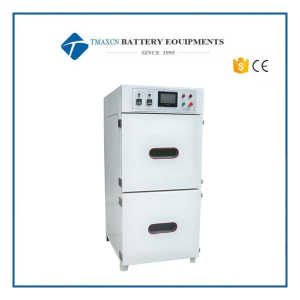 150C Vertical Two Chambers Vacuum Drying Oven for Battery Electrode or Battery Core
150C Vertical Two Chambers Vacuum Drying Oven for Battery Electrode or Battery Core
-
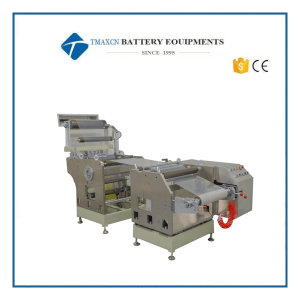 Automatic Vertical Plate Gap Coater For Battery Production Electrode Making or Tape Casting Preparation.
Automatic Vertical Plate Gap Coater For Battery Production Electrode Making or Tape Casting Preparation.
TMAX-CF650 is a compact hydraulic crimper for sealing all types of cylinder cases in battery R&D labs. The compact body design allows it to be easily placed inside a glove box and thus preventing contamination of the electrolyte materials during cell assembly. Simple operation with safety protection feature allows customers to master the sealing procedure within 5 minutes.
-
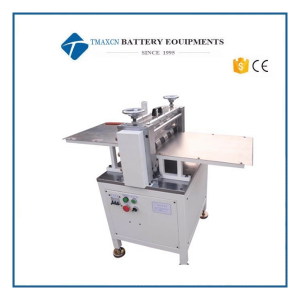 18650 21700 4680 32650 AA AAA Cylindrical Cell Semi-automatic Electrode Slitting Machine
18650 21700 4680 32650 AA AAA Cylindrical Cell Semi-automatic Electrode Slitting Machine
1 TMAX-MQ300A semi-automatic electrode die cutter is mainly used for pouch cell electrode sheet cut for stacking pouch cell battery. It is a necessary tool in the production line of pouch cell to produce specific shapes of cathodes and anodes with current collector tabs. 2 This Semi Automatic Die Cutter machine adopts Safety Curtain built in the front of the machine and double start button ensures operation safety when electrode sheets are fed from the front. 3 High speed, high accuracy, long lifetime to make cutted electrode without burr, to get a good consistency. 4 This model has max die dimension with 200*300mm, if need other models, please choose the TMAX-JD-500model with max die size up to 500*500mm.
-
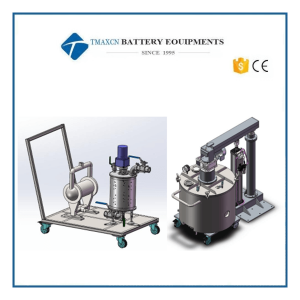 Magnetic De-ironing Filtration System for Battery Electrode Slurry
Magnetic De-ironing Filtration System for Battery Electrode Slurry
Magnetic De-ironing Filtration System for Battery Electrode Slurry 1.Introduction This equipment is a specific feeding equipment for lithium ion battery coating machine, which is composed of two parts: turnover barrel + iron removal filter. 2.Standard composition and key configuration table 2.1Turnover barrel and lifting part 1.Feeding barrel Design volume/use volume 150L/100L The material of the inner tank of the mixing tank in contact with the material: 304 stainless steel. Mixing barrel specification About φ650*450 1) Discharge valve: G2” (DN50); 2) The barrel body has push and pull handles, and the barrel bottom has 4 casters (2 orientation + 2 universal); 3) Cooling/heat preservation: with bottom/side wall cooling jacket, cooling water inlet/outlet water distribution pipe union 2.Upper cover Upper cover specification Match with the corresponding mixing tank The material of the part in contact with the material: 304 stainless steel. 1), with 2 small windows, a spotlight, feeding tube DN25 (with 304 ball valve), suction/discharge vacuum interface, vacuum pressure gauge and other spare connections; 2) The upper cover and the mixing barrel are fixed and locked with quick-locking buckles. 1. Mixing accessories and basic parameters Mixing shaft/Mixing paddle speed About 25rpm Material: SUS304 Mixing motor power 1.1kw/4P Reducer(matched with motor) NMRV-090-60-FA-F2-Y90S-1.1KW Mixing paddle form Combined frame type mixing paddle. 4.Mixing principle The combined frame-type mixing paddle performs downward pressure rotation to ensure that the material does not deposit. 5.Vacuum guarantee system: 5 skeleton oil seals are installed in parallel, and the vacuum source is provided by the user 1), the vacuum degree is ≤-0.098Mpa, keep for 24 hours not less than -0.08Mpa. 2) Sealing method: A, static seal uses "O"-shaped sealing ring; B, skeleton oil seal. 6. Power distribution box: the stirring switch, spotlight switch, emergency stop and other functional operations during equipment operation are all carried out on the power distribution cabinet. 7. Lifting device: 1 φ125x800 lifting cylinder, equipped with 1 safety pin 2.2Iron removal filter part No. Name Material Note 1 Shaft seal Viton Wear-resistant and corrosion-resistant 2 Blade Polyester plastic (imported from UK)Wear-resistant and corrosion-resistant 3 Blade spring SUS304 4 Sealing ring Silica gel 5 Shaft assembly EPDM+SUS304 6 Filter element SUS316 Accuracy deviation value: ±0.03mm (maximum ±0.05mm), diameter deviation value: ±0.3mm 80 mesh to 200 mesh optional (standard 120 mesh) 7 Shell/Upper and Lower Plate Cover/Blade Holder SUS304 8 DC motor 24V/60W 9 Separator pump Aluminum alloyQBY-25 3.Liquid level sensing system Working principle: The liquid level sensor transmits the signal to the solenoid valve according to the change of the material liquid level, and the solenoid valve controls the feeding amount of the pneumatic diaphragm pump, thereby realizing the function of automatic feeding. No. Name Model Quantity Note 1 liquid level sensor Domestic brand 1 2 The electromagnetic valve Taiwan 1 3 Intermediate relay Domestic brand 1 4 Intermediate relay holder Domestic brand 1 5 Rotary Switches Domestic brand 1 4.Principle This equipment is filled with dry compressed air into a sealed pressure barrel, and pressurizes the inner cavity of the pressure barrel to press the slurry into the upper trough of the coating machine.
-
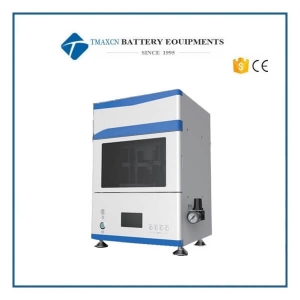 Battery Electrode Resistance Analyzer Machine for Lithium Battery Testing
Battery Electrode Resistance Analyzer Machine for Lithium Battery Testing
Battery Electrode Resistance Analyzer Machine for Lithium Battery Testing The importance of electrode resistance Electrode resistance (conductivity) influences the basic performance of batteries, not only on the power capability (internal resistance), but also on the reliability or safety performance. Through the measurement of electrode resistance the property of electric conductive, micro-structural uniformity of electrodes can be evaluated during die electrode many&manu&cture process in advance, thus help us to research and improve the formulation of composite electrodes as well as the control parameters of mixing, coating and calenderii^; processes. In the composite electrodes, the electric conductivity is determined by several primary factory, such as the inter&cial resistance between the coating layer and the conductive foil, the distributions of conductive agents, die intrixisic resistance of active material and the contact areas between particles. The functions of BER multi-function electrode resistance analysis method for electrode process monitoring are listed as follows: Comprehensively assessment of the slurry stability from the stirring, coating to the calendering process, which helps to recognize die anomaly aggregation of conductive agents in advance; Recognition of uneven mixing on mixture silicon—carbon cathode; Assessment of dectric conductivity offonnulas for diferent active materials; Assessment of electric conductivity of formulas for diferent conductive agents; Assessment of electric conductivity of the functional pre—coating lays of current collector; Failure analysis for the electric conductive networic failure of batteries; Analysis of contact resistance of the positive or negative electrode sur&ce after formation. The limitations of traditional test methods Currently, there are several methods have been used to test the electrode resistance, such as four point probe method or multi point probe method and single point probe method. Though these traditional methods may have been maturely used in di&rent types of film industry areas, for the evaluation of the composite electrode films in lithium ion batteries, there are still several deficiencies that can not be ignored. The four point probe film resistance test method has been wildly used in thin films industries, which use four or even more probes array to test the film resistance form film sur&ce. Its test procedure is easy and simple, and it can reveal the anisotropic resistance components of thin film by a simple equivalent circuit model fitting. However, considering its test principle and model fitting process, this mediod can only be suitable for a uniform thin film with smooth sur&ce, and the test sample should be loaded on an insulating substrate for ideal resistance fitting. Unfortunately, the electrodes ofliduum ion batteries are composite electrode with complex compositions, rough sur&ce and loadit^ on a low resistance current collector, so their four point probe test data, are often inconsistent and difficult to analyze the result by theoretical models. Increasing die probe number and using more complicate models can improve the test reliability to a certain extent, but that need more complex structures, and again the result analysis is still difficult. The single point test method was another wildly used method in the lithium ion batteries industry, which use a fixed probe on the end of the curtent collector and a mobile probe on the surface of the electrode to directly measure the electrode resistance. This is a very simple way of electrode resistance test often carry out by a homebuilt system for difierent users, but it is still a rough empirical test method without considering the influence of press pressure, conductive path length, substrate materul and so on. As a result, the single point probe method can not provide a reliable and consistent electrode resistance data as well. Methods Four point probe test Single point probe test Electric test circuit Kelvin four-wire test technology + direct current stimulation Kelvin four-wire test technology + alternating-current Probe structure four assembled equidistant probes (< ® 1mm), which's tops are kept in the same plane during the test to get a physical contact with the sample surface One probe (usually is an alligator clip) is fixed on the current collector, and the other probe (usually is a Cu terminals) is mobile to contact on the sample surface Applicable samples Single component thin layer material with smooth surface Composite electrode with current collector Advantages and limitations √ Simple and fast measurement √ To reveal the anisotropic resistance components of thin film X Not suitable for composite electrode with current collector √ Simple and fast measurement √ Suitable for composite electrode with current collector x X A rough empirical test method without considering the influence of press pressure, conductive path length, substrate material, etc. * Developed with CATL the top power battery company and Authorized exclusively for the Patent. The TMAX’s creative solution The BER series Battery electrode resistance analyzer uses the upper and lower plane controllable pressure probes to directly measure the electrode to obtain the overall resistance and resistivity in the thickness direction of the electrode, including the contact resistance between the probe and the coating, the coating resistance, and the contact resistance between the coating and the current collector. Current collector resistance; The BER series is the first Battery electrode resistance analyzer for the lithium battery industry . The dual—plane controllable—pressure high—conductivity probe designed for composite electrode diaphragms and micron—level flat surface treatment ensure measurement accuracy; the high-precision resistance resolution and the attached calibration module ensure stable and reliable measurement results. Introduction of principles Multi-function One — stop data collection of key parameters including pressure, film resistance, film thickness, temperature, humidity, etc.; guarantee the reliability and traceability of measurement result. Automatic measurement Automatic measurement of the resistance under different pressure, thickness, temperature and humidity, etc.; provide a real time data display. Professional processing software *Provides various resistance measurement and analysis methods, including Single point test, continuous test, *Fixed pressure mode, variable pressure mode (ForBER1300) Show data curve *Different presented modes of data analysis and statistics. Integrated design Complete integration of pressure control module, resistance and voltage measurement module, thickness measurement module and the chamber illuminating module Device Four-probe and multi-probe methods BER series Principle Kelvin four-wire method+DC excitation Kelvin four-wire method+AC excitation current Structure Four taper equidistant probes in the same Φ14 mm copper terminals located at the upper and lower Suitable Single-component film with smooth surface(non-battery electrode) Thick composite material(battery electrode) with resistance Features Measure single-component film resistance and conductivity or smooth surface Measure the resistance and conductivity of the battery electrode, adjustable test pressure Conclusion 1.The traditional test method does not consider the influence of parameters such as pressure and contact area during the electrode test, and the theoretical calculation model of the multi-probe is quite different from the actual sample, and the data results are uncontrollable; 2.The BRE series electrode resistance meter can accurately control the test parameters such as test pressure and area to ensure stable and reliable results, and can directly obtain the corresponding relationship between the electrode compaction and the electrode resistance. *Developed with CATL the top power battery company and Authorized exclusively for the Patent Software Measurement system analyze *Part of the data comes from the partners, and the copyright belongs to the relevant parties. It can not be reproduced or used without consent. Applications Material evaluation 1.Correlation between powder conductivity and electrode conductivity Results Analyze Adjust the Ni content in the NCM material, and test the powder conductivity. It can be found that as the Ni con tent increases, the powder conductivity increases; Comparing three NCM pieces with different Ni content, it can also be obtained that as the Ni content increases, the conductivity of the electrode piece increases; Powder resistivity and electrode have the same trend! 2.Evaluate the resistivity of uncalendered electrode pieces under different compaction densities Conditions: 5-60MPa, step 10MpPa, keep 25s Results Analyze ♦ For graphite electrode, with the increase of compaction density, the resistivity continues to decrease. The reason is that the contact between active materials increases, and the overall conductivity of the electrode becomes better; ♦ For NCM electrode, with the compaction density increases, the resistivity of the pole piece continues to decrease. The main reason is that as the pressure increases, the contact between terminals and the active material becomes better; Process evaluation 1.Evaluation of electrode primer technology <a> The thicker the primer, the greater the resistance of the current collector; <b> The thicker the primer, the greater the cathode resistance; <c> After determining the best primer coating process based on the correlation between the two, the electrode resistance test can be used as a method for long-term monitoring of process stability. 2.Conductive agent distribution uniformity evaluation By monitoring the change use the resistance of the battery electrode, an abnormal battery electrode can be quickly identified, to prevent the bad battery electrode from flowing into the next process, and to save production costs. Cell evaluation 1.Analysis of electrode resistance during high temperature cycle&storage *The resistance of the cathode continues to increase with the increase in the number of cycles, indicating that a large change has taken place on the cathode side after the high temperature cycle, which may be related to the byproducts on the surface of the cathode particles or the contact between the particles; *The resistance of the anode membrane increases with the storage time, which indicates that the anode side has changed a lot during the storage process, which may be related to the increase of side reactions on the anode material surface *Part of the data comes from the partners, and the copyright belongs to the relevant parties. It can not be reproduced or used without consent. Parameter Resistance range 1uΩ-3.1kΩ Resistance accuracy ±0.5%FS Pressure range 50-600kg/5-35MPa(BER2100/BER2200) 50-1000kg/5-60MPa(BER2300/BER2500) Pressure accuracy ±0.3%F.S Thickness range 0-5mm(BER2500) Thickness resolution/accuracy 0.1um/±1um(BER2500) Temperature and humidity 0-50℃, 20-90%RH Temperature and humidity accuracy ±2℃, ±5%RH Installation requirement voltage 200-240V/50-60Hz Voltage variation tolerance ±10% Power dissipation 50W(BER2100/BER2200)/450W(BER2300/BER2500) Air source Pipeline gas or air compressor is required(BER2100/BER2200) Environmental temperature 25±5℃ Environmental humidity Humidity <80%RH at the temperature of 40℃ Environmental magnetic field Keep away from intense electromagnetic Net weight 76kg(BER2100/BER2200), 83kg(BER2300), 85kg(BER2500) Dimension(W*D*H) 355*320*550 mm(BER2100/BER2200) 355*320*800(BER2300/BER2500) Note: TMAX is committed to continuous improvement of products. TMAX reserves the right to alter the specifications of its products of its products without notice. All trademarks are registered by TMAX. Model BER2100 BER2200 BER2300 BER2500 Press mode Cylinder(pipeline gas required, range: 5-35MPa) Servo motor(No pipeline gas required, range: 5-60MPa) Testable parameters Resistance, pressure Temperature and humidity Resistance, pressure Temperature and humidity conductivity, resistivity Resistance, pressure temperature and humidity conductivity, resistivity Resistance, pressure Temperature and humidity conductivity, resistivity thickness, compaction density Function One point test Constant pressure condition Included BER2100 function Automatic measurement software Included BER2200 function Variable pressure Included BER2300 function Thickness measurement Compaction density measurement
-
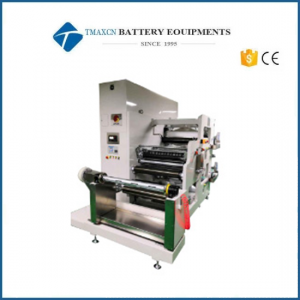 High Speed Continuous Slitter w Roll to Roll System for Battery Anode and Cathode Electrode Preparation
High Speed Continuous Slitter w Roll to Roll System for Battery Anode and Cathode Electrode Preparation
-
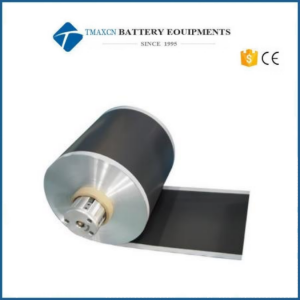 Customized Anode and Cathode Battery Electrode for Cylindrical/Pouch/Prismatic Cell
Customized Anode and Cathode Battery Electrode for Cylindrical/Pouch/Prismatic Cell
 ru
ru
 Iris@tmaxcn.com
Iris@tmaxcn.com David@tmaxcn.com
David@tmaxcn.com +86 13174506016
+86 13174506016 18659217588
18659217588